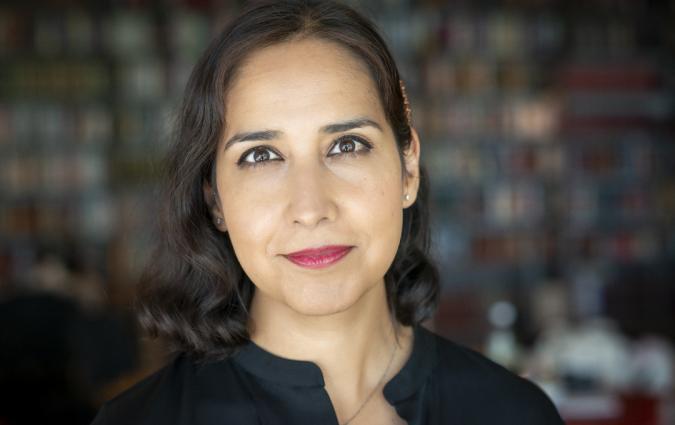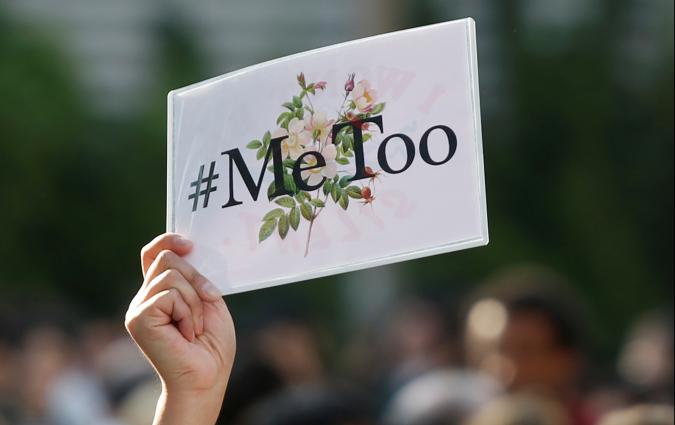In this piece
Sámi coverage is often a blindspot for Norwegian tabloids. Here's how to improve it

Journalist fellow Tor looked at 20 years of Sámi politics coverage by the country's two biggest tabloids: VG and Dagbladet. REUTERS/Stoyan Nenov
In this piece
The responseMy mother is Sámi, and my father is an ethnic Norwegian from southern Norway, but I am not a fan of measuring people by fractions. As Geir Wulff, editor of the Sámi newspaper Ságat, puts it: “There are no half-Sámi. The Sámi blood is like ink in water. Everyone with Sámi blood in them is Sámi.”
That is why, when I was lucky enough to be selected for a fellowship to immerse myself in a journalistic question at the Reuters Institute for the Study of Journalism, it was, of course, the Sámi question. I wanted to investigate how much coverage Norway’s most-read tabloid media – Verdens Gang and Dagbladet – gives to the affairs of Sámi parliament, politics and identity.
While Sámi media exists, and receives state funding, it does not reach the wider Norwegian population. For the public to remain informed and connected to Sámi issues, they must be reported by the national press.
To measure coverage, I tallied news stories about Sámi parliament over the past 20 years, focusing my efforts on two of the nation’s most-read tabloid outlets: Verdens Gang (VG) and Dagbladet.
VG is a daily newspaper headquartered in Oslo, and founded in 1945. It had the highest single sales in Norway in 2020, and the most subscribers. Its website is the most-visited news site according to a report by the Media Companies' National Association (MBL), which was released in September 2020. MBL said VG drew 1.97m daily active users (DAUs). Its nearest competitor was public media NRK, which has an average of 1.33m DAUs.
The next most-visited site follows Dagbladet, with 1.12m. Dagbladet is also published from Oslo, and was founded in 1869. Founded as an opposition paper, it is known for its characteristic disrespectful and bloodthirsty tone. It switched to tabloid format in 1983.
Neither tabloid includes much coverage of the Sámi Parliament. As the graph below illustrates, over the course of 20 years, Dagbladet had 280 articles for average annual coverage of 14 articles, and VG had 160 pieces for average annual count of eight articles.
Graph 1: Articles about Sámi parliament in VG and Dagbladet between 2001-2020
The notable peak in coverage in 2004 is due to a series of investigative reports about Sámi parliament, reviewing MPs travel expenses and interrogating financial management. The series ended on April 15, 2005, with a report that the Sámi Parliament was “slaughtered” by the Office of the Auditor General due to financial mismanagement.
How important is it that the national press cover the proceedings of the Sámi parliament? The outgoing President of Sámi Parliament Aili Keskitalo thinks it is “vital.”
“We are part of the community in Norway, and we are in the minority in most local communities and regions and at most levels of government,” she told me. “It means that others make decisions that concern us. We, therefore, need the majority of society to have minimum knowledge – and preferably more than that – about our social conditions.”
President of the Sámi Parliament Aili Keskitalo. (Photography: Åse M.P. Pulk/Sámediggi)
It is not easy to get the attention of tabloids on substantial issues, she said. “There are often very curious issues that they pick up. These are rarely related to issues the Sámi Parliament has on the agenda.” Instead, she said, the tabloids approached parliament when they needed a response to other people’s statements (“Are you offended again?”) or when a Sámi has done something that is perceived as unusual or strange.
Does Keskitalo see any difference in how VG and Dagbladet cover Sámi issues? “I cannot say that I’ve experienced a systematic difference between the two big tabloids in Norway,” she said. “It’s more dependent on the attention span of the individual journalists. Journalists from the north have a better network of contacts and a better overview of the Sámi community. They may therefore be able to capture or put Sámi issues in context . I believe that physical presence in the northern part of the country impacts how Sámi matters are covered.”
Skjalg Fjellheim, a former Dagbladet journalist and current political editor of Northern Norway's largest newspaper, Nordlys, sees Sámi coverage as a massive blindspot for the national press.
Political editor Skjalg Fjellheim in Nordlys. (Photography: Nordlys)
“It means that news about people, culture, and business is virtually non-existent,” he said. Coverage is instead characterised by cultural exoticism around topics like yoik [folk singing] and reindeer herding and fails to capture the diversity of Sámi interests.
“The absence of discussions of social conditions is systematic over many decades,” he told me. “It is probably related to the lack of correspondents in or near the Sámi core areas.” That missing coverage, he said, “could be an important tonic against prejudice and harassment that some Sámi still experience”.
He did make an exception for “a single luminous exception of the last decade”: VG’s coverage of the Tysfjord case. In June 2016, VG profiled 11 people – all Sámi people from Tysfjord – who had been sexually assaulted in the Læstadian church (similar to Swedish Lutherans). The coverage led to a 2017 investigation that uncovered 151 cases of abuse and 92 suspects. The victims were mostly girls aged 7 to 16 and the abuse had been ongoing for more than 70 years.
Mona Solbakk, editor and division director of NRK Sápmi, agreed that VG’s coverage of the Tysfjord case was “exceptional”.
“We at NRK Sápmi first ‘poked’ at the case several years ago. But it was VG who made the big revelations and put the issue on the national agenda,” she said. “It shows what VG – and Dagbladet – can do if they are interested and want to use resources.”
Editor and division director of NRK Sápmi Mona Solbakk. (Photography: NRK Sápmi)
She said national media could also learn a lot from VG’s approach to their Tysfjord coverage. “They had people on the reporting team with knowledge of Sámi culture. So they had an understanding of how the sources would react. We can all learn from that: using people with the right cultural understanding in complex cases.”
Solbakk believes national coverage of Sámi affairs is important because keeping a minority group visible can help to prevent polarisation. “I hope the national media can also take part in this job for the Sámis, and that the work is not left only to Sámi broadcasters and newspapers.”
“We need more people than NRK to delve into Sámi matters. I do not think indigenous people in Norway are visible enough in the national media.”
I interviewed Solbakk soon after Sámi National Day on 6 February. “I was pleased that VG had several cases about Sámis that day,” she said. “It's good to see! That wasn't the case just a few years ago.”
She would however, like to see coverage from a more celebratory perspective, noting that the tabloids tended to run stories that cultivated conflict, including a particularly egregious example of a woman dressed in her kofte (traditional costume) under the headline “Oh, you’re wearing your clown clothes like that”. By contrast, coverage of Norwegian national day, 17 May, shows happy children marching, cakes and celebration. “I’d like to see February 6th in the national media as a joyful people's day, too,” said Solbakk.
The response
Gard Steiro, editor-in-chief and director of VG, is not particularly surprised that my data found coverage of Sámi issues was limited – although he thought an analysis of both print and digital coverage, instead of just print, may have yielded a more positive picture.
Responding to Fjellheim's criticisms, Steiro said he agreed the media can help break down prejudices but he didn’t believe a lack of coverage was increasing division. “I do not feel VG increases the distance between the Sámi and the Norwegian,” he said. “On the contrary, I think that VG as a broad and popular newspaper represents a link between people in different parts of the country, between social groups and political opponents, between Norwegian-born Norwegians and minorities,” he said.
VG has no specific Sámi coverage strategy, he said, but concern for covering critical issues was on the agenda. “VG is an editorial office that spends considerable resources on covering current news and events that affect most of our readers. It means that the coverage of Sámi cases will also vary [according to] the news picture. For example, when the Tysfjord case was pending, it affected VG's coverage of the Sámi. If other issues of great public interest arise, the shares will increase,” he said.
“The Tysfjord case was about countless abuses against individuals. Admittedly, it took place in a Sámi environment, but a crime of this nature and scope would have been a major issue regardless of where it had taken place.”
Steiro agreed VG has a clear responsibility for raising groups exposed to injustice or neglect: this is outlined in point one of their editorial principles. “That wording can be interpreted in many ways, but I believe that one of our tasks is to increase trust between population groups. It can be between Sámi and others, but also between different immigrant groups and other Norwegians,” he said. “In that sense, I think Solbakk has a point. The visibility of the Sámi can help build these bridges.”
I knew before starting this project that there was limited Sámi coverage in the national press. That it was quite so limited in Norway’s two leading tabloids came as a surprise.
The situation is not entirely dark though: there has been much positive development of the Sámi community in recent times, and I took hope in Steiro’s parting words on the topic of Sámi coverage. "We can never say that we are happy,” he told me. “It will always be possible to improve our coverage – also by the Sámi."




